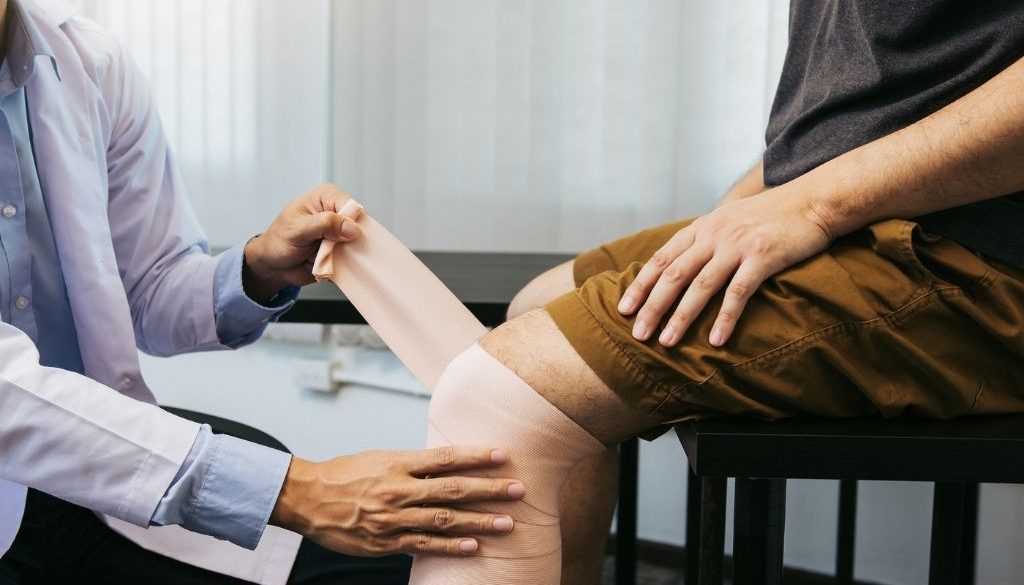Your Complete Guide to What to Expect After a Knee Replacement Surgery
You’ve said goodbye to the activities you love.
Perhaps knee pain has made it impossible for you to go on that daily morning run. Maybe the aches in your joints cause difficulties playing with your grandchildren. Your tennis game? Put on hold.
But it doesn’t have to be this way. Return to the activities you love through joint replacement surgery.
We have the experienced, compassionate health care team to help get you back on track through sophisticated, state-of-the-art knee replacement surgery.
Are you considering getting a joint replacement but aren’t sure what to expect after the procedure? We’ve provided this useful, informative guide to help you.
What to Expect After a Knee Replacement
While every case is different, these are some general guidelines that will help you.
Hospital Stay
Not everyone who has a knee replacement has to stay in the hospital, but if you are admitted, you’ll likely just stay overnight.
After surgery, you may be wearing compression boots. This is to help alleviate swelling and reduce your chances of developing a blood clot. This is another reason why we encourage you to move your feet and ankles after surgery—doing so helps increase blood flow to your leg muscles.
Managing Your Pain
We will work with you to reduce your pain, which will aid in your recovery. We’ll speak to you about which type of pain medication will be the most appropriate for your situation.
Your pain should begin to improve after a few days. If it hasn’t, please be sure to speak with us.
Exercise and Therapy
Did you know that you can begin “trying out” your new knee hours after your surgery? One of our physical therapists will work closely with you to craft exercises that target specific areas aimed at allowing you to walk as soon as possible after surgery.
This is important because patients who are able to exercise their knee after surgery have a faster recovery and better outcomes than patients who do not.
Some of the exercises you may be asked to do include:
- Quadriceps exercises
- Leg raises
- Ankle pumps
- Knee bends (bed-supported and sitting-supported)
- Working with resistance bands
Depending upon your individual situation, you may be discharged to your home or you may need to continue physical therapy at an inpatient rehabilitation center.
Recovery at Home
Once you are discharged, a large part of your success depends upon how carefully you follow your doctor’s orders and your physical therapy “homework.” You’ll find that exercise is vital to ensure a complete recovery and to get you back to the activities you once enjoyed.
Again, your individual routine will vary depending upon your individual situation, but some good exercises to consider are:
- Walking—starting with short distances and gradually working up to farther distances
- Practice sitting, standing and climbing stairs
- Stationary biking
Taking Care of Your Wound
Taking care of the surgical site is another vital component of recovery.
Most likely, you’ll have suture underneath your skin that won’t have to be removed. If your surgery requires exposed stitches or staples, those will be removed in the weeks following surgery in your surgeon’s office.
Remember to keep the wound dry until it’s completely sealed. A sterile bandage will be placed after surgery and you will be given instructions when you can take this off.
Keeping in Touch with Your Team
You won’t be alone in your recovery; we’re with you every step of the way. Through frequent updates and visits, we’ll ensure that you’re progressing as you should and make any adjustments that are necessary.
Remember, you have an entire team behind you.
Conway Medical Center: Your Local Experts at Joint Replacement Surgery in the Myrtle Beach Area
Our Joint Replacement Center is the area’s leader in a variety of knee replacement options designed to help you return to the activities you love without pain. We offer:
- Conservative treatment options such as injections
- Total knee replacements
- Partial knee replacements
- Revision total knee replacements
So, if you’re looking for orthopaedic surgeons in the Myrtle Beach area, we have the answers. See why our team are experts at joint replacement surgery utilizing the latest techniques and technology.




